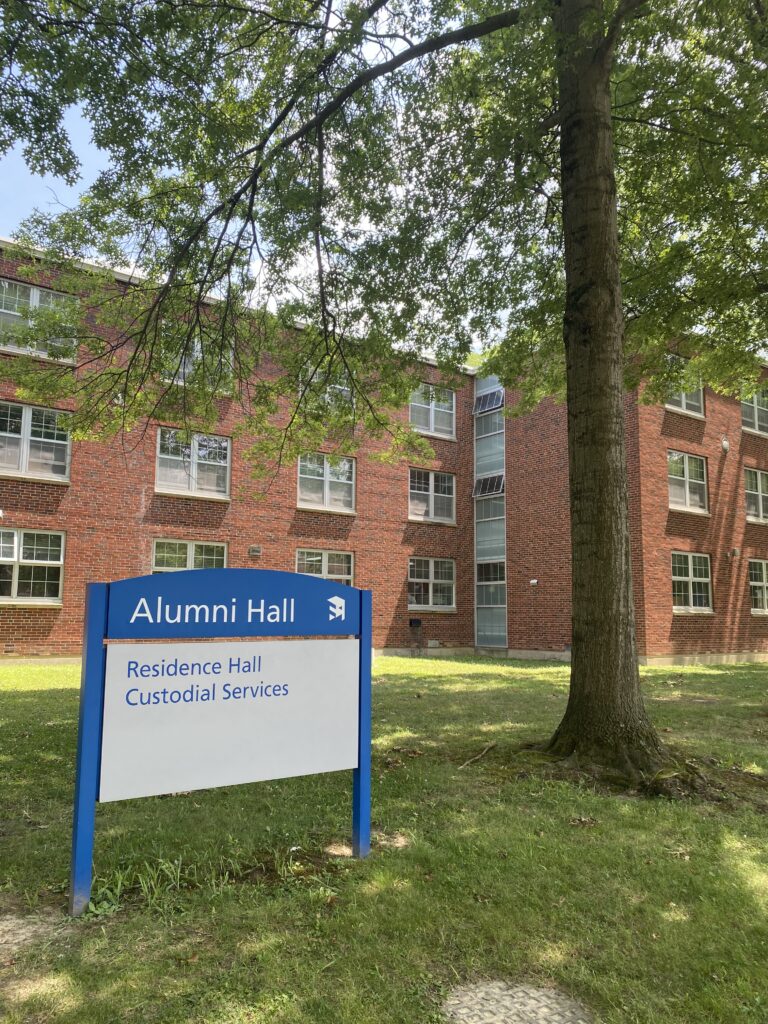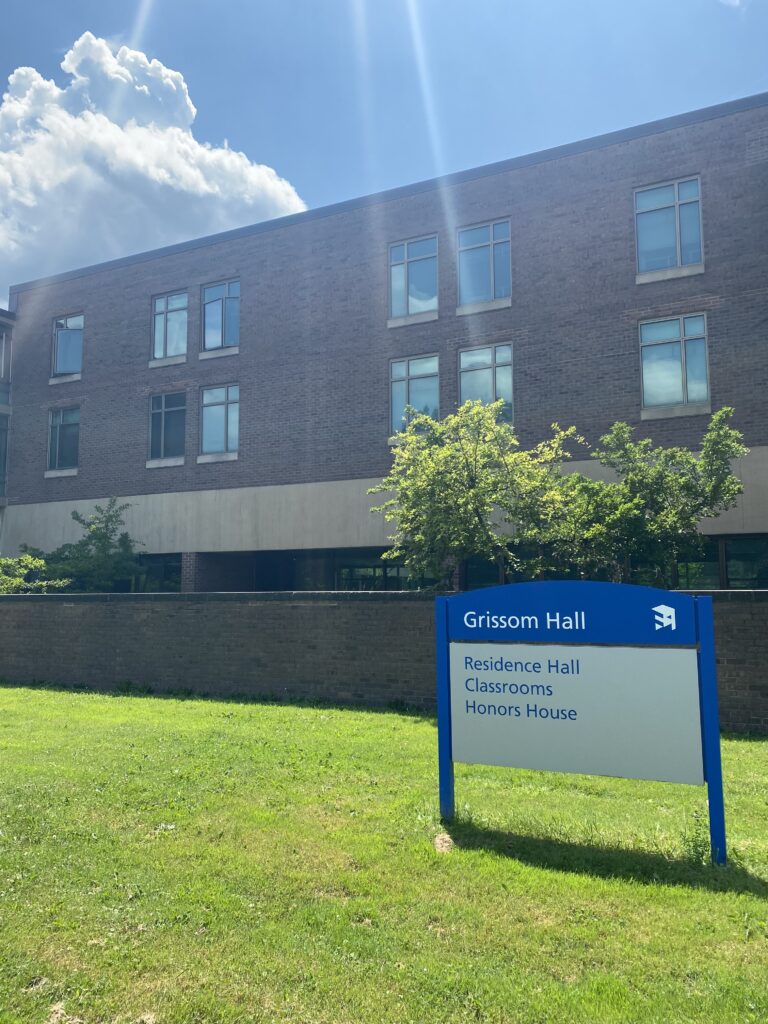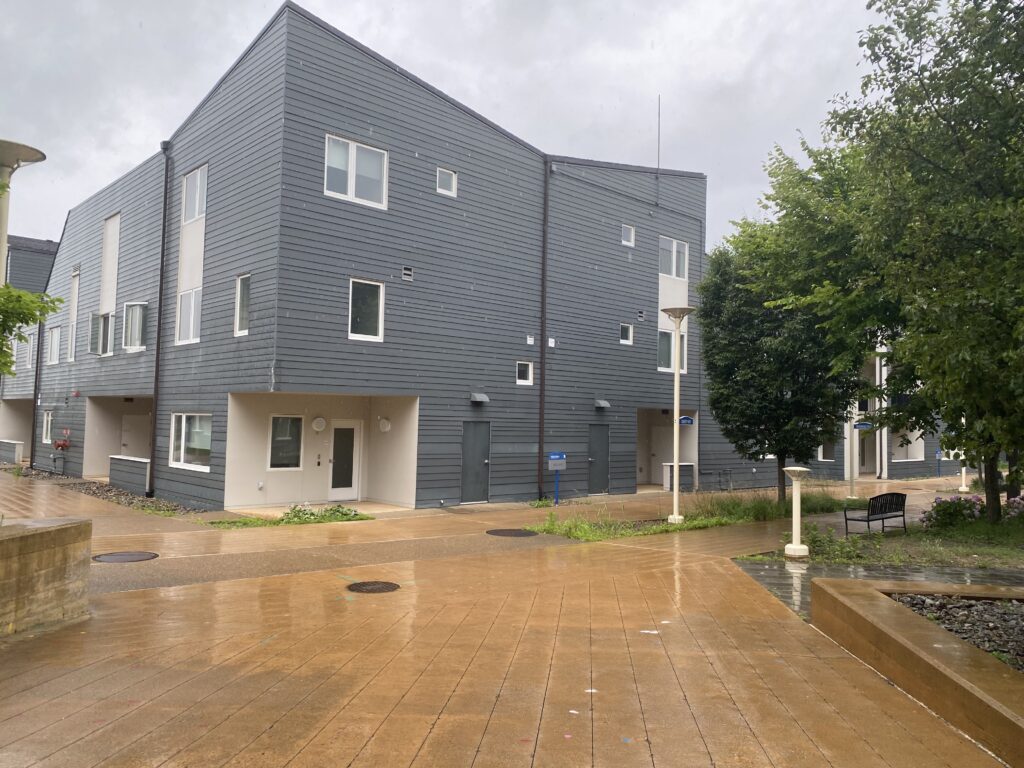DAN QUAGLIANA
Managing Editor



SUNY Fredonia’s campus can seem like a daunting place to a prospective or new student arriving on it for the first time.
With four different styles of residence halls, it can be incredibly difficult to figure out which one can be the right fit for you. The differences between them, however, aren’t as subtle as they might appear to be at first glance.
Freshmen will be put into one of two types of residence halls: corridor-style and suite-style. These halls have different layouts, which is apparent from their names. However, even different halls of the same style can have distinctions in their layouts and living arrangements.
There are more corridor-style dormitories than any other kind, so an explanation of those is always a good place to start.
Currently, there are five corridor-style buildings in use on campus: Alumni Hall, Chautauqua Hall, Gregory Hall, McGinnies Hall and Nixon Hall.
According to Fredonia’s website, corridor-style dorms “feature an open lobby with comfortable seating and games; there is also a mailbox for each student room in [the] lobby near the RA desk.”
While individual rooms of a corridor-style hall don’t have kitchens or any sort of cooking equipment for students to prepare their own food, there is a single communal kitchen in the lobby of each dorm if students have a hankering for a midnight snack.
The one-kitchen-per-residence-hall standard is true for all corridor-style dorms except Gregory Hall; that building is geared towards independent living, so it has more amenities than its siblings, with the caveat that freshmen can’t live there.
Gregory Hall, named for former Fredonia President Dr. Leslie R. Gregory, is broken up into five houses, each of which contains a laundry room, penthouse lounge and a kitchen. The building also contains the offices of Residence Life (ResLife), University Police and the Faculty Student Association (FSA), as well as the Career Development Office (CDO).
Freshmen will usually only be placed in Chautauqua and Nixon Halls, as Alumni and McGinnies Halls are primarily upper-class dorms. All of them, however, are coed.
In terms of physical layout, the corridor-style dorms feature long hallways with rooms branching off of them. The only common area in these dorms is the relatively spacious one in the lobby.
This common area location is in contrast to the suite-style dormitories, which, as is evident by the name, feature individual suites with four bedrooms each. Each suite contains an isolated bathroom and common room, allowing for greater interaction between residents of neighboring rooms.
Open suite-style dorms for this semester are Disney, Eisenhower, Grissom and Kasling Halls, all of which are physically connected as part of the Kirkland Complex. Residents are not, however, allowed to travel freely between the halls — students can only enter the hall in which they live.
Like the corridor-style buildings, suite-style dorms also contain only one communal kitchen in the lobby. Residents of both corridor- and suite-style dorms are required to purchase FSA meal plans for use on campus, with the exception of seniors. Due to the multiple kitchens in the building, residents of Gregory Hall are also exempt.
Disney and Eisenhower Halls contain something that Grissom and Kasling don’t: kitchen suites. Instead of a fourth room, some suites in those buildings contain full-size kitchens, with everything you need to rival the FSA-prepared fare. Similarly to Gregory Hall, students living in a kitchen suite are not required to purchase a meal plan.
There are other suite-style dorm buildings on campus that aren’t open for student living this semester. The Andrews Complex, which contains Hemingway, Hendrix, Igoe and Schulz Halls, is currently closed.
According to Director of Facilities Planning Markus Kessler, these vacancies are due to low student enrollment.
Kessler additionally noted that, “The Andrews Complex is not closed forever, and still could stand a chance at reopening if student enrollment continues to rise,” as written by The Leader’s Alexander Bucknam in a Spring 2024 article.
The one dormitory on the main side of campus that doesn’t fit into either of these two classifications is University Commons.
Distinguished as a “combination-style” building, University Commons (UC) is essentially an upper-class corridor-style dorm with “lounges on each floor [and] double and single rooms with adjoining shared bathrooms,” according to the University’s website. Each room features a miniature fridge and self-controlled heating and air conditioning, both amenities that are unique to this dorm.
Outside of the dormitory area of the building, University Commons also houses the University Bookstore, Convenience Store, Cranston Marché and Starbucks.
But what about the other side of campus, the side with all of the sports fields?
If you direct your gaze out that way, you’ll see gray, rectangular buildings towering over Interstate 90. That is University Village, in which lay the townhouses.
The townhouses are essentially Residence Life-owned apartments that lack Resident Assistants (RAs) and offer a great deal more independence and freedom than the dormitories on campus.
For example, since there are no RAs, residents don’t need to check in guests — they can just walk right in with the resident(s) of the townhouse. Students can also stay over winter break for free, something unique to the townhouses. Similarly to the rest of the dorms, residents can also stay over week-long breaks, such as Thanksgiving and spring breaks.
Additionally, residents can move into the townhouses starting on Aug. 22 — one week earlier than dorm residents can arrive on campus. In the Spring, they can also stay one week later, up to May 25, 2025.
Every townhouse includes the same features: a kitchen, living room, four single-person bedrooms, two bathrooms (each with a shower) and heating and air conditioning. This is regardless of the specific floor plan each townhouse has, of which there are three: one floor, two floors and three floors.
In the one-floor townhouses, the bedrooms are connected to a hallway that branches off from the combined kitchen/living room. In the two-floor townhouses, the kitchen and living room make up the first floor, while the bedrooms and bathrooms sit above them.
The three-floor townhouses follow the same pattern: the kitchen and living room are on the first floor, and the two other floors each contain two bedrooms and one bathroom.
As well-liked as the townhouses are, they come with one catch: residents need at least 30 credits to live in one, meaning freshmen don’t get the option of calling one home. They’re also the most expensive residence on campus, which makes them a somewhat prohibitive choice.
With so many living options on campus, it can be difficult to choose one to spend an entire year of your life in. While some residence halls are objectively better than others, there’s a home for everyone somewhere on campus.
